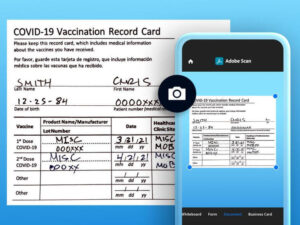More than 40% of wireless customers using Wi-Fi calling are happier with their network quality than those not using it, says J.D. Power.

Image: molchanovdmitry, Getty Images/iStockphoto
Wi-Fi calling is a feature found on mobile phones that places phone calls over your local Wi-Fi network if your cellular connection is too weak to handle them. And with the coronavirus lockdown forcing people to stay at home, it’s a feature mobile users seem to appreciate, according to J.D. Power.
For its “2020 U.S. Wireless Network Quality Performance Study Volume 2,” J.D. Power found that 42% of wireless customers using Wi-Fi calling are more satisfied with their wireless network quality than those not using Wi-Fi calling.
SEE: Managing and troubleshooting Android devices checklist (TechRepublic Premium)
“Wi-Fi calling is the offloading of a weak cellular connection to a Wi-Fi based data network in nearly all cases not owned or operated by the wireless carrier,” Ian Greenblatt, managing director at J.D. Power, said in a press release. “Safer-at-home has meant a significant increase in these largely invisible handoffs, and consumers have perceived a higher quality of call and connection as a result. Ensuring a flawless handoff and high quality of service of that traffic back to the carrier’s network is critical to maintaining the lift in satisfaction enjoyed by Wi-Fi callers.”
How to use Wi-Fi calling
iPhone: To view or enable Wi-Fi calling, go to Settings and then Cellular. Tap the setting for Wi-Fi Calling. At the next screen, turn on the switch for Wi-Fi Calling on This iPhone. You can also turn on the switches for Prefer Wi-Fi While Roaming and Add Wi-Fi Calling for Other Devices.
Android: Open Settings. Go to Network & Internet and then to Mobile network. Tap the section for Advanced. Select Wi-Fi Calling and turn the switch on. You can also set your roaming and calling preferences to Wi-Fi.
Looking at other details in the new J.D. Power report, Verizon Wireless was rated tops in five out of six regions for the fewest network quality issues per 100 connections. The ranking looks at such features as call quality, messaging quality, and data quality. Verizon came in first in the Mid-Atlantic, Northeast, Southeast, Southwest and West regions, while U.S. Cellular was tops in the North Central region.

Image: J.D. Power
Based on responses from 32,497 wireless customers, the J.D. Power report examines carrier performance in six US regions: the Mid-Atlantic, North Central, Northeast, Southeast, Southwest and West. Beyond evaluating the network quality for customers with mobile phones, the study analyzes the network performance of tablets and mobile broadband devices. The latest study was conducted from January through June 2020.
Also see
Source of Article




